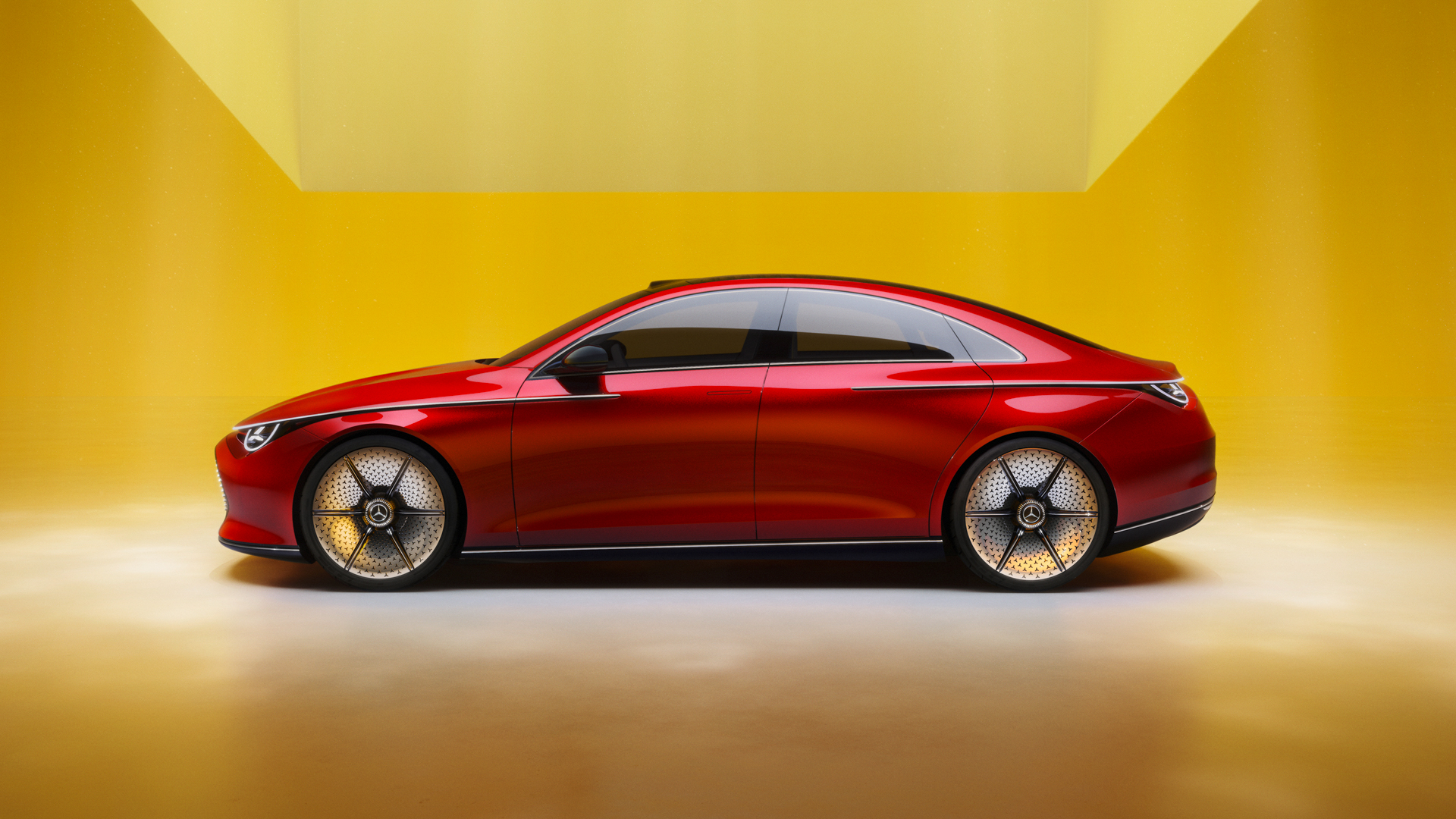

Mercedes-Benz just dropped a preview of its Tesla-fighting bombshell, the new electric CLA Class. While still technically in its concept phase, much of what you see here is what you’re going to get when the sedan eventually reaches production in 2025. Don’t expect the extravagant LED-adorned front end, or the doors that open with the wave of a hand. Still, most, if not all of its mechanical bits should make it to the road car—chief among them, its EQXX-sourced electric motor and a two-speed transmission.
Under the pebble-smooth skin, the Mercedes CLA boasts some impressive specs. As the first car built on Mercedes’ new MMA (Mercedes Modular Architecture) electric car platform, it will have 800-volt technology and the same rear electric motor as the ultra-long range EQXX concept. That single motor powering the rear wheels makes 235 horsepower, similar to the current gas-powered CLA’s internal-combustion engine. However, it’s the two-speed transmission that’s most interesting.



Most electric vehicles, regardless of size, body style, or cost, use single-speed, direct-drive transmissions. That’s because electric motors don’t require the torque multiplication that transmission gears provide. A few EVs have two-speed transmissions, such as the Porsche Taycan and Audi e-tron GT, to help optimize performance off the line and at high speed. But both of the aforementioned EVs are high-priced, enthusiast cars. Mercedes has not yet announced a price, but the CLA should be the brand’s entry-level EV that’s designed more for range and comfort than outright performance.
Traditional thinking suggests that transmissions actually have a negative effect on EV range, due to adding unnecessary drivetrain loss. However, longtime automotive supplier ZF, who’s specialized in transmissions for decades, claims to have a multi-speed electric drive unit (which includes the motor, inverter, and two-speed transmission) that not only improves performance but also efficiency compared to single-speed drive units. Mercedes also clearly sees the benefit to using a two-speed gearbox but it isn’t using ZF’s drive unit. Instead, Mercedes told The Drive that the new CLA’s electric drive unit was designed and built entirely in-house.



One of the benefits of a two-speed transmission, according to ZF, is better performance out of smaller motors. That should be a boon to weight, efficiency, and range. Mercedes is quiet on the CLA’s battery size, but the company did claim a WLTP-rated range of 466 miles. With that sort of longevity on a charge, the CLA could put quite a bit of pressure on competitors like the Tesla Model 3, BMW i4, and Hyundai Ioniq 6—and its two-speed transmission could be a key reason why.
Got tips? Send ’em to tips@thedrive.com